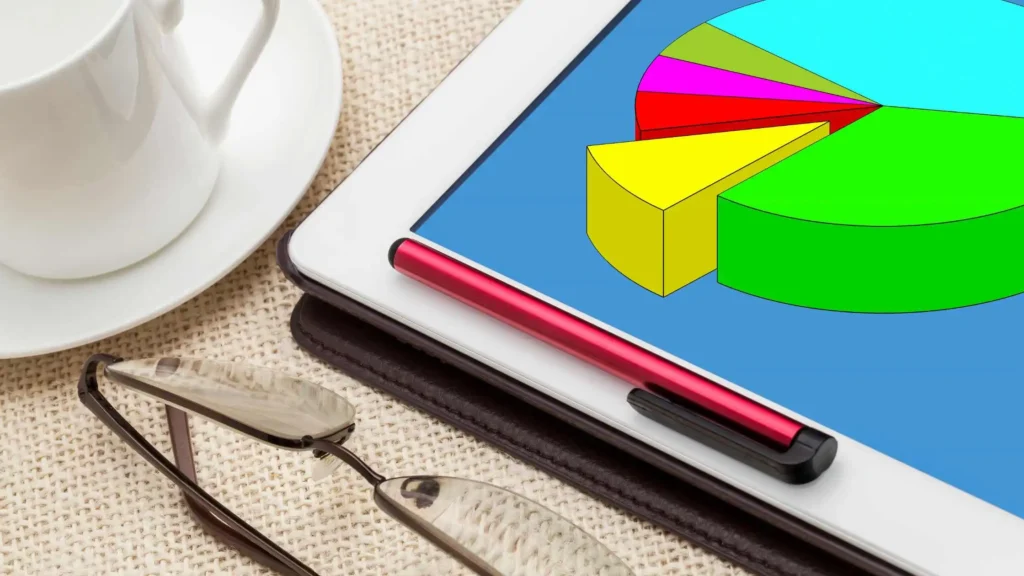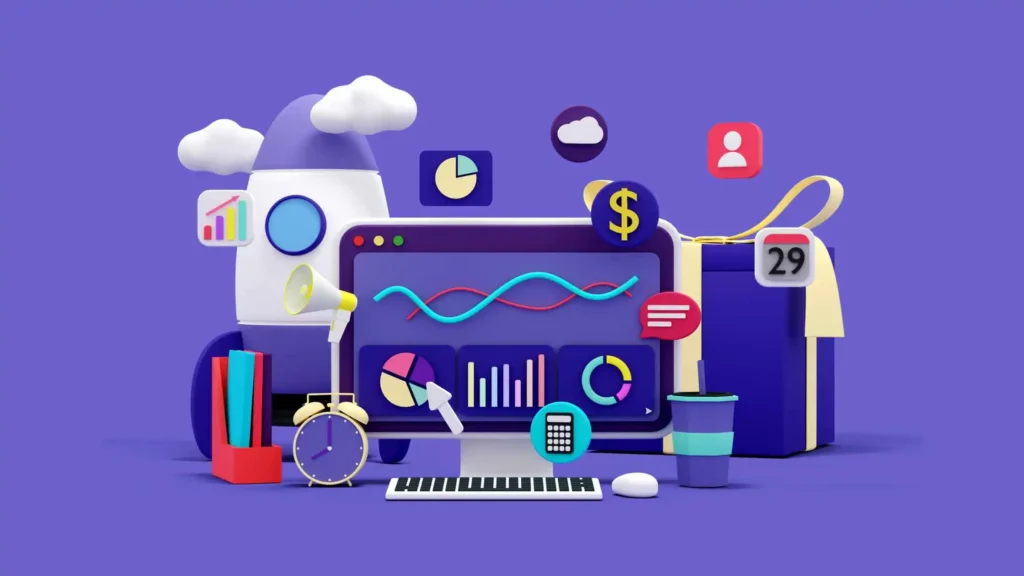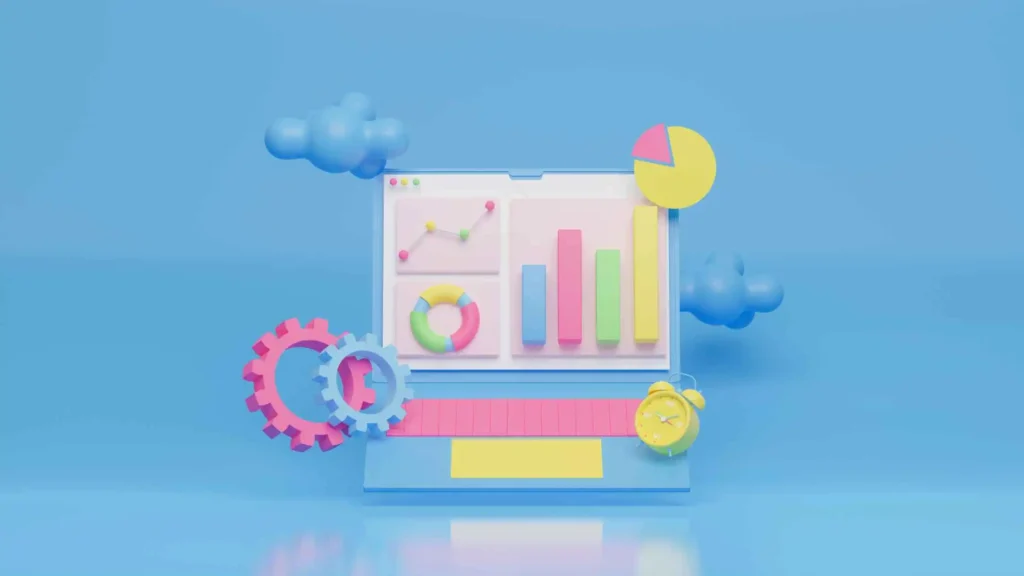Looking for a comprehensive guide on connecting data sources in Microsoft Power BI? This step-by-step guide provides detailed instructions, tips, and best practices to help you seamlessly integrate your data sources with Power BI.
Microsoft Power BI is a powerful business intelligence and data visualization tool that enables users to transform raw data into meaningful insights.
One critical step in harnessing Power BI’s power is connecting data sources.
Whether working with Excel spreadsheets, databases, or cloud-based applications, this guide will walk you through connecting your data sources in Microsoft Power BI.
This article will cover everything from the basics of data connections to advanced techniques for integrating multiple data sources.

So let’s dive in and unlock the full potential of Power BI!
Why is Connecting Data Sources Important?
Connecting data sources in Microsoft Power BI is crucial for harnessing the full potential of this powerful tool.
By connecting your data sources, you can:
- Unify Data: Power BI allows you to combine data from various sources into a single cohesive platform, enabling you to analyze and visualize data holistically.
- Enable Real-time Insights: By connecting real-time data sources, you can access up-to-the-minute insights and make real-time data-driven decisions.
- Enhance Data Accuracy: Connecting data sources ensures that the data used in Power BI reports and dashboards is accurate, eliminating the need for manual data entry and reducing the risk of errors.
- Enable Cross-Platform Analysis: Power BI enables you to connect and analyze data from various sources, including databases, cloud applications, spreadsheets, and more. This allows for comprehensive cross-platform analysis.
Now that we understand the importance of connecting data sources let’s explore the step-by-step process of combining various data sources with Microsoft Power BI.
Here’s How to Get Started with Power BI
Step 1: Installation and Setup
To start with Power BI, you must download and install the Power BI Desktop application.
It is a Windows-based tool that provides a rich environment for creating reports and dashboards.
Once installed, launch Power BI Desktop and sign in using your Microsoft account or organizational credentials.
Step 2: Connecting to Data Sources
After launching Power BI Desktop, you can connect to your data sources.
Click the “Get Data” button in the Home tab to browse the available connectors.
Select the appropriate connector for your data source and follow the prompts to establish a connection.
Power BI supports a wide range of connectors, making importing data from various sources easy.
Step 3: Data Transformation and Modeling
Once your data is connected, you can apply data transformation steps using Power Query.
Power Query provides an intuitive interface for filtering, transforming, and cleaning your data.
You can remove unnecessary columns, merge tables, perform calculations, and apply various transformations to shape your data.
After transforming your data, you can create relationships between tables using the Manage Relationships feature.
Step 4: Creating Visualizations
With your data prepared and modeled, it’s time to create visualizations.
Power BI offers a drag-and-drop interface, allowing you to select visual elements from the Visualizations pane and drop them onto the canvas.
You can customize the visual properties, such as colors, labels, and axes, to create compelling and insightful visuals.
Utilize the vast range of visual types to represent your data accurately.
Step 5: Building Reports and Dashboards
Combine your visualizations into interactive reports and dashboards to tell a comprehensive data story.
Reports in Power BI consist of multiple pages, each containing a collection of visuals.
Add text boxes, images, and shapes to provide additional context and insights.
Dashboards serve as a summary view, displaying key visuals from multiple reports in a single canvas.
Users can interact with the visuals and explore the underlying data.
Can I schedule an automatic data refresh in Power BI?
Absolutely! Power BI offers the ability to schedule data refreshes at regular intervals.
You can define the refresh frequency and ensure that your reports and dashboards always reflect the latest data.
Connecting Excel Spreadsheets to Power BI
Excel spreadsheets are a popular data source for many organizations.
Power BI provides seamless integration with Excel, allowing you to connect your spreadsheets and unlock their potential for visualization and analysis.
Here’s how to connect Excel spreadsheets to Power BI:
- Open Power BI Desktop: Launch Power BI Desktop and click the “Get Data” button in the Home tab.
- Select Excel: In the “Get Data” window, choose “Excel” from the available options.
- Choose the Excel File: Browse and select the file you want to connect to Power BI.
- Select Worksheets/Tables: Choose the specific worksheets or tables within the Excel file you want to import into Power BI.
- Transform and Load: Optionally, you can apply data transformation steps using the Power Query Editor before loading the data into Power BI. This allows you to clean, shape, and refine the data per your requirements.
- Load Data: Click the “Load” button to load the data into Power BI.
Following these steps, you can easily connect your Excel spreadsheets to Power BI and leverage the data to create insightful reports and dashboards.
Can we connect on-premises data sources to Power BI?
Yes, Power BI provides Data Gateways that enable secure connectivity between on-premises data sources and Power BI.
This allows you to access and analyze data from your local databases and systems.
Using Data Gateways for On-Premises Data Sources
If your organization stores data in on-premises data sources, Power BI provides a solution called Data Gateways.
Data Gateways enable secure and efficient transfer between on-premises data sources and Power BI.
Follow these steps to set up a Data Gateway:
- Download and Install Data Gateway: Visit the Power BI service website and download the installation package suitable for your environment.
- Configure Data Gateway: Install and configure the Data Gateway on a machine with access to your on-premises data sources. Follow the step-by-step instructions provided in the installation wizard.
- Sign in to Power BI Service: Sign in to the Power BI service and navigate to the “Manage Gateways” section.
- Create Data Source Connection: Create a new data source connection and provide the necessary details, including the connection string and credentials.
- Publish Reports and Dashboards: Once the data source connection is established, you can publish reports and dashboards that leverage the on-premises data sources through the Data Gateway.
Data Gateways provide a secure and efficient way to connect on-premises data sources to Power BI, enabling real-time access and analysis of your organization’s critical data.
Can I connect multiple data sources to Power BI?
Power BI allows you to connect and combine data from multiple sources, including Excel spreadsheets, databases, and cloud-based applications.
This enables comprehensive analysis and visualization.
Conclusion
Connecting data sources in Microsoft Power BI is a crucial step in harnessing the tool’s full potential.
You can unlock valuable insights, enable real-time analysis, and make data-driven decisions by connecting Excel spreadsheets, databases, cloud-based applications, and more.
With Power Query, you can transform and shape your data, while relationships between data sources allow for comprehensive analysis across multiple tables.
Additionally, Power BI provides features like DirectQuery, Live Connections, and Data Gateways for enhanced connectivity and security.
By scheduling data refresh, you can ensure your reports and dashboards always reflect the latest data.
With the step-by-step guide and the ability to connect a wide range of data sources, you can leverage Microsoft Power BI to gain valuable insights and drive business success.












Pingback: Best Practices for Designing Effective Reports in Microsoft Power BI